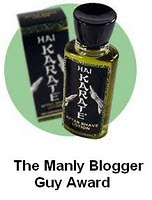Title: The Dead Pool
Released: 1988
Genre: Dirty Harry, take five
Notable for: Memorable performances by future stars
Coolest thing Clint does: Blows away the bad guy with a harpoon gun
No doubt exists in our limited minds that "The Dead Pool" is the worst Dirty Harry movie. It's the fifth and last in the series, and inspiration does not flow like a cool stream.
Here are five bad parts.
1. "You're shit out of luck" is the worst catch phrase in the Harry Callahan arsenal of catch phrases. Brad could expound on this for several paragraphs, but as a gesture of mercy, he won't.
2. It was impossible to hate the bad guy with the proper passion because he was barely in the film. "The Dead Pool" tries to be something of a whodunit, and that's not right. We don't want to see Dirty Harry solve a crime, we want him to bring bloody justice to psychotic scumbags we know are guilty almost from the opening credits.
3. The expected elements of Dirty Harry movies were by this time so predictable Clint himself plays with them as cliches. When assigned a new partner, he says out loud what everyone in the audience must think. "All my partners end up dead or in the hospital." He carries Dirty Harry's fondness for big guns to a laughable extreme by wielding a harpoon gun in the final scene.

4. The plot is stupid. It's a story about some celebrities who bet on which other celebrities will die and somehow their picks become public and for some reason a dude kills off celebrities on the list of a particular movie director played predictably well by Liam Neeson. That is all we intend to say about that.
5. Dirty Harry is no longer despised by superiors on the police force. He receives a little token complaining about the cost of a police car destroyed on his watch, but Dirty Harry has become a celebrity cop. He's so famous he's on Neeson's list of celebrities expected to die. Much of the movie's message appears intended to be commentary on the nature of celebrity and the media in modern society. No one watches Dirty Harry for that kind of crap.
Strangely enough, we still like the movie.
Jim Carrey and Neeson give good performances early in their careers. Click here to see Carrey (credited as James, not Jim) go all super-freaky. And there is a cameo appearance by Guns N' Roses.
Stupid plot or not, Clint has some great scenes blowing away scumbags. Some of them, as usual, he stumbles upon while walking down the street. Others are hit men out to kill him for sending a mob boss to prison.
One example of classic Clint comes when he's had enough of those pesky hit men. Clint goes to the prison where the mob boss is locked up and scares him shitless by fooling him into believing he, Clint, has purchased protection from the nastiest inmate goon in the prison. A couple of scenes later, mobsters are tailing Clint as bodyguards, not killers.
The ending includes fine symmetry circling back to the very first moments when we saw Dirty Harry 17 years earlier. In the first movie, Clint pretended to lose track of whether he shot all his bullets, asking punks if they felt lucky enough to assume his gun was empty. In the finale, the bad guy steals Clint's .44 magnum and blasts away at him. Then all grows quiet as Clint walks slowly toward the killer with the aforementioned harpoon gun. "You're out of bullets," Clint says. Then he fires a harpoon through the guy's chest.
Nailing that guy with a harpoon was unnecessary (translation: murder) but it is one of the more awesome displays of Dirty Harriness.
As every male knows, the worst Dirty Harry is still better than a lot of other movies. Speaking on behalf of The Clint Eastwood project, we're going to miss Harry Callahan from here on out.
Next up: "Pink Cadillac."



















